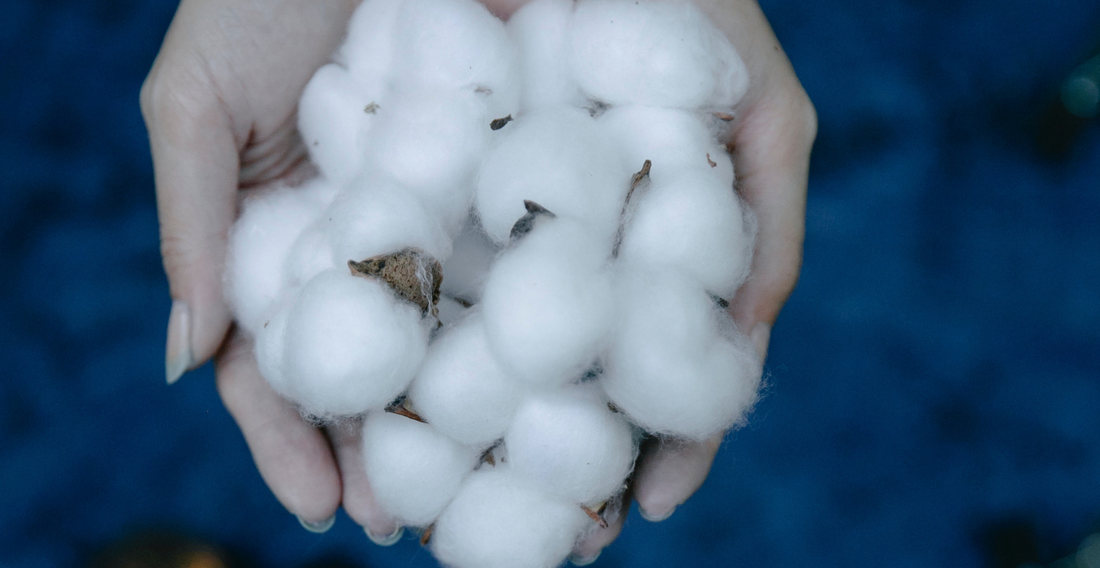
The Best & Worst Clothing Fabrics for the Environment Ranked
Share
It's no secret that the fast fashion industry is hurting our planet, producing as much as 8% of global carbon emissions each year, according to the UN Environment Programme. Fast fashion refers to the routine production of low-quality clothing at cheap prices; clothes are not made for repeated seasonal wear, but rather based on quickly evolving trends in fashion, meant to be worn only while in style.
Among the biggest problems the fast fashion industry causes are overproduction of textiles dumped in landfills around the world and pollution of our natural resources like water, land, and air. While the best thing you can do to help the environment and slow global warming is to buy less and recycle more, you are no doubt going to shop for clothes for you and your family over time.
To help you discern which clothing fabrics are healthier choices for your body and sustainable for the planet, we've rounded up and ranked the best and worst clothing fabrics according to their environmental impact in an easy to reference guide.

Best Sustainable Fabrics
Organic (or Recycled) Cotton - Why: No pesticides and other toxic chemicals are used, meaning cleaner air and water, healthier soils, and safer farming.
Organic (or Conventional) Hemp - Why: Natural material that is gentler on the earth and requires less water and land to grow.
Organic (or Conventional) Linen - Why: Natural material, requires minimal water and pesticides, biodegradable, even hypoallergenic.
Lyocell (Tencel) - Why: Wood pulp that is transformed into cellulosic fibers; produced with low environmental impact and requiring less energy and water to produce.
Recycled (or Organic) Wool - Why: Natural fiber, durable, reduces the environmental and ethical impacts of virgin wool production.
Somewhat Sustainable Fabrics
Recycled Polyester - Why: Production requires 59% less energy and supports a 32% reduction in CO2 emissions, but it is not biodegradable and still sheds pollutant microplastics in washing.
Recycled Nylon - Why: Diverts waste from landfills and its production uses much fewer resources, but it is not biodegradable and still sheds pollutant microplastics in washing.
Alpaca - Why: Natural fiber, durable, but livestock overproduce methane/greenhouse gas emissions, and production has animal welfare related ethical concerns.
Silk - Why: Renewable/biodegradable material, but typically uses high water consumption, toxic chemical pollutants, and production has animal welfare/child labor related ethical concerns.

Bad, Least Sustainable Fabrics
Rayon (Viscose) - Why: Sodium hydroxide and carbon disulfide are toxic chemicals combined with wood pulp to form fabric, damaging the environment through wastewater discharges.
Bamboo (Viscose) - Why: Wood pulp is treated with in-organic chemicals like carbon disulfide to soften it into fabric, is harmful to workers and heavily impairs the environment.
Cotton (Conventional) - Why: Conventional cotton farming pollutes soils and water sources; one of the most pesticide- and water-intensive crops.
Wool (Conventional) - Why: Resource-intensive material to produce, huge methane/carbon emissions produced by sheep, and animal welfare related ethical concerns.
Modal (Conventional) - Why: Technically biodegradable but requires deforestation and toxic chemicals to soften it into fabric, is harmful to workers and heavily impairs the environment.
Cashmere - Why: Oversized goat herds result in grassland degradation, loss of biodiversity, and elevated greenhouse gas emissions, and animal welfare related ethical concerns.
Leather - Why: Deforestation, livestock methane/greenhouse gas emissions, water-intensive and chemical pollutant-based processes, and human/animal welfare related ethical concerns.
Worst, Most Environmentally Damaging Fabrics
Polyester - Why: Though durable, polyester produces microplastics and greenhouse gas emissions during production; is water-and energy-intensive; doesn’t biodegrade so may stay in landfills for hundreds of years.Acrylic - Why: Acrylic is a synthetic fiber made of acrylonitrile, a carcinogen, and a mutagen that can cause health problems based on exposure for production workers; is energy intensive to produce; not biodegradable so can end up in landfills.
Nylon - Why: During production nylon releases nitrous oxide, a greenhouse gas with global warming potential 300 times that of carbon dioxide; also creates microplastic pollution when washed.
Denim - Why: Made from conventional cotton, denim requires extremely high water usage, energy consumption, and chemical pollution to manufacture, including pesticides, fertilizers, dyes, and finishing agents that harm the environment. For example, the use of synthetic indigo for dyeing jeans and finishing agents like formaldehyde.
Spandex - Why: During production releases greenhouse gas emissions; when burned in landfills it releases carbon, contributing to air pollution; microplastics released from washing pose health risks to wildlife and humans.

